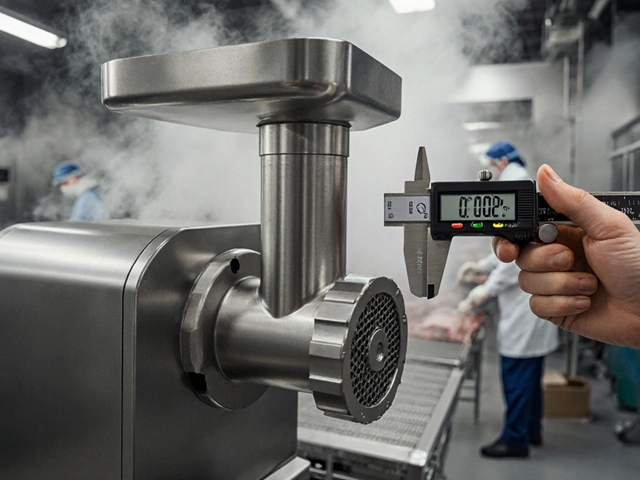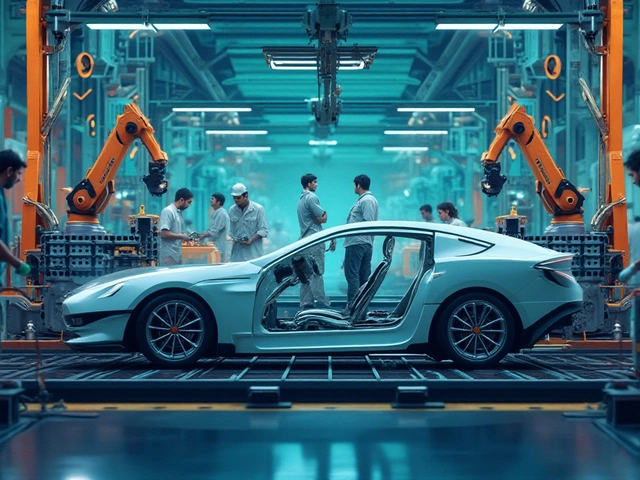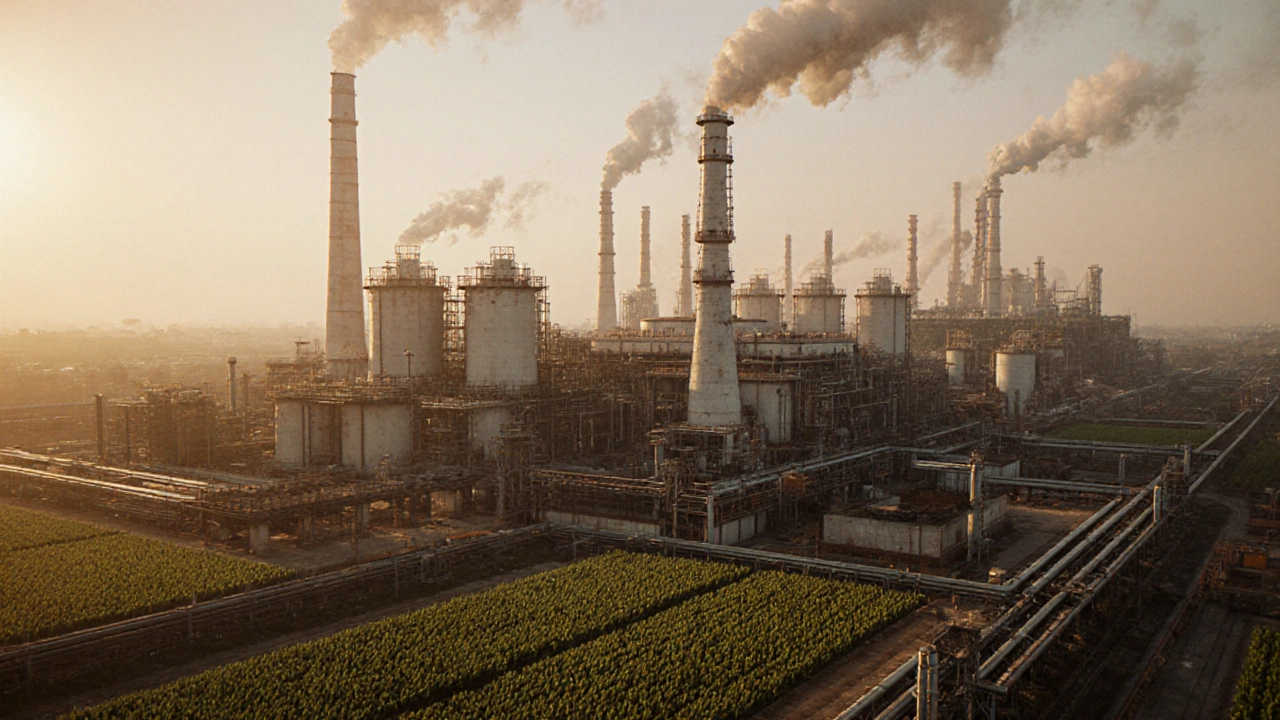
Sulfuric Acid to Fertilizer Calculator
Sulfuric acid is the backbone of India's fertilizer industry. According to the article, over 70% of sulfuric acid production goes into making phosphoric acid, which becomes phosphate fertilizers. This calculator shows how much sulfuric acid is needed to produce a specific amount of fertilizer, helping you understand the massive scale of chemical manufacturing in India.
India produces over 32 million metric tons of sulfuric acid annually, with over 70% used for phosphate fertilizer production. This makes sulfuric acid the 'king of chemicals' in India's industrial landscape. Without sulfuric acid, India's food production would be severely impacted since the country imports nearly 80% of its phosphorus rock.
When people talk about the king of chemicals, they’re not referring to something flashy or rare. They’re talking about the workhorses of industry - the chemicals that power everything from fertilizers to plastics, from cleaning products to pharmaceuticals. In India, where chemical manufacturing is one of the largest industrial sectors, a handful of these chemicals dominate production, exports, and economic growth. These aren’t just chemicals. They’re the backbone of modern life.
Why These Chemicals Are Called the King
The term "king of chemicals" isn’t official. It’s industry slang, passed down from plant managers to chemical engineers. It’s used because these substances are so fundamental, so widely used, that no major industry can run without them. If you shut down production of one of these, entire supply chains collapse. Factories stop. Farms go unfertilized. Water treatment plants fail. Clothes can’t be dyed. Batteries can’t be made. In India, the top three chemicals that earn this title are sulfuric acid, ammonia, and chlorine. Together, they account for over 60% of the country’s bulk chemical output. They’re not glamorous. They don’t come in pretty bottles. But they’re everywhere.Sulfuric Acid: The Silent Engine
Sulfuric acid (H₂SO₄) is the undisputed king. India produces over 32 million metric tons of it every year - more than any other chemical. It’s the most produced industrial chemical in the world, and India is the fifth-largest producer globally. You won’t see it on store shelves. But you’ll find it in every bag of fertilizer you buy. Over 70% of sulfuric acid in India goes into making phosphoric acid, which becomes phosphate fertilizers. Without it, India’s food production would crash. The country imports nearly 80% of its phosphorus rock. Sulfuric acid is the key that unlocks that resource. It’s also used in metal processing, oil refining, and battery acid. Every lead-acid car battery you’ve ever replaced? That’s sulfuric acid inside. Even the aluminum used in your smartphone’s frame was processed using sulfuric acid. Major producers in India include Tata Chemicals, UPL Limited, and Gujarat Alkalies & Chemicals. These companies operate large-scale plants in Gujarat, Tamil Nadu, and Maharashtra, often near ports to handle raw material imports like sulfur and pyrite.Ammonia: Feeding the Nation
Ammonia (NH₃) is the second king. It’s the primary ingredient in nitrogen-based fertilizers - the kind that makes crops grow fast and green. India is the third-largest consumer of ammonia in the world, after China and the U.S. About 90% of India’s ammonia is used to make urea, the most common fertilizer in Indian farms. The government subsidizes urea to keep food affordable. That means ammonia production is tied directly to national food security. India has over 50 ammonia plants, mostly run by public sector companies like FCI, Rashtriya Chemicals & Fertilizers (RCF), and National Fertilizers Limited (NFL). These plants are usually located near natural gas fields because ammonia is made from hydrogen (from methane) and nitrogen (from air). Newer private players like Piramal Enterprises and Gujarat State Fertilizers & Chemicals (GSFC) are investing in modern plants with lower emissions. The push for green ammonia - made using renewable energy instead of fossil fuels - is starting to take shape in Gujarat and Rajasthan.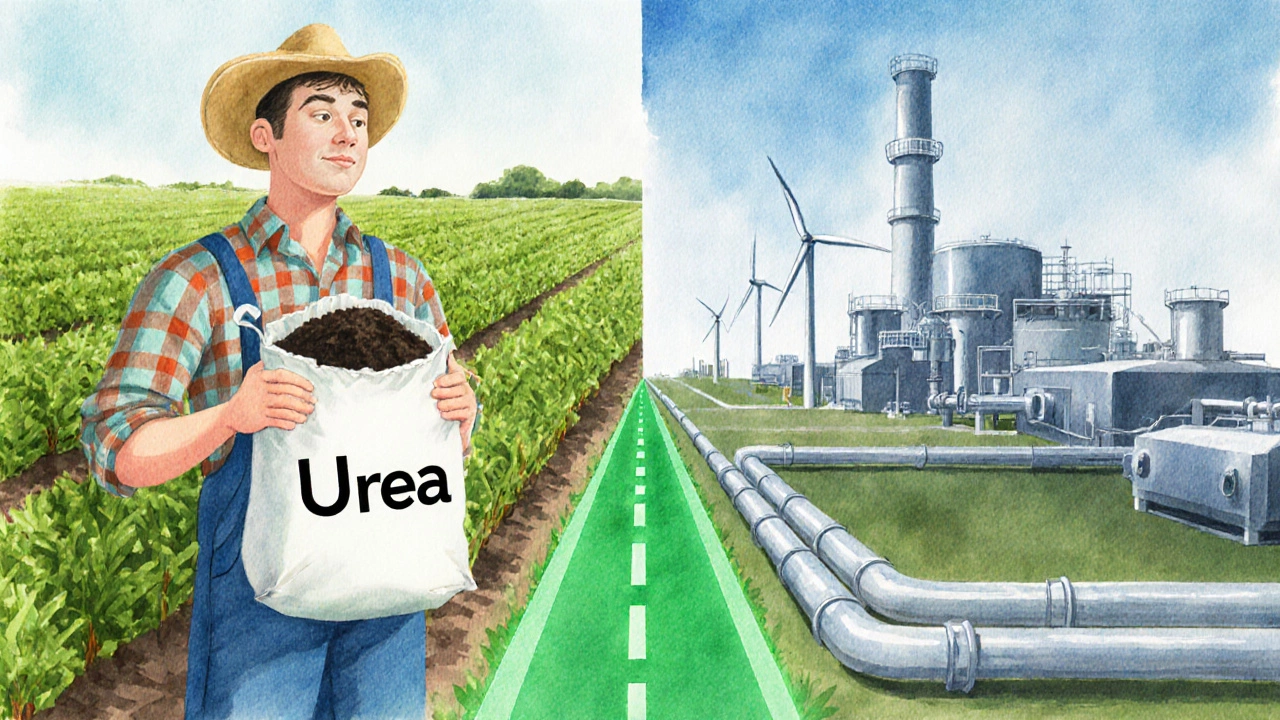
Chlorine: The Disinfectant and Builder
Chlorine is the third pillar. It’s not just for swimming pools. It’s used to make PVC plastic, solvents, disinfectants, and bleach. In India, chlorine production is tightly linked to the alkali industry - it’s a byproduct of making caustic soda (sodium hydroxide). India produces around 2.8 million metric tons of chlorine annually. Nearly half of it goes into PVC production, which is used in pipes, window frames, and cables. The construction boom over the last decade has driven demand. Chlorine is also critical for water treatment. Every municipal water supply in cities like Delhi, Mumbai, and Bangalore uses chlorine to kill bacteria. Major producers include Grasim Industries, Reliance Industries, and Aarti Industries. Most plants are located along the west coast for easy access to salt (the raw material) and export routes. The industry is shifting toward membrane cell technology, which uses less energy and produces purer chlorine. Older mercury-cell plants are being phased out under environmental regulations.Other Important Chemicals in India’s Chemical Landscape
While sulfuric acid, ammonia, and chlorine rule the throne, other chemicals play vital supporting roles:- Caustic soda (NaOH) - Used in soap, paper, and textile processing. India produces over 3 million tons yearly.
- Hydrochloric acid - Used in steel cleaning and chemical synthesis. Often made as a byproduct of PVC production.
- Sodium hypochlorite - The active ingredient in household bleach. Produced from chlorine and sodium hydroxide.
- Phosphoric acid - Made from sulfuric acid and phosphate rock. The link between fertilizer and chemical manufacturing.
How India Compares Globally
India is not the largest producer of these chemicals - China and the U.S. are. But India is one of the fastest-growing markets. Between 2020 and 2025, India’s chemical manufacturing output grew at 7.3% annually, according to the Indian Chemical Council. What’s driving this? Low labor costs, expanding infrastructure, and government incentives like the Production Linked Incentive (PLI) scheme for specialty chemicals. The PLI scheme, launched in 2021, offers up to 15% financial support for companies making high-value chemicals like electronic-grade solvents and pharmaceutical intermediates. India’s advantage? It’s not just about volume. It’s about integration. Indian chemical companies often control the full chain - from raw material sourcing to finished product. A single plant in Gujarat might produce chlorine, caustic soda, and PVC all in one facility. That cuts costs and boosts efficiency.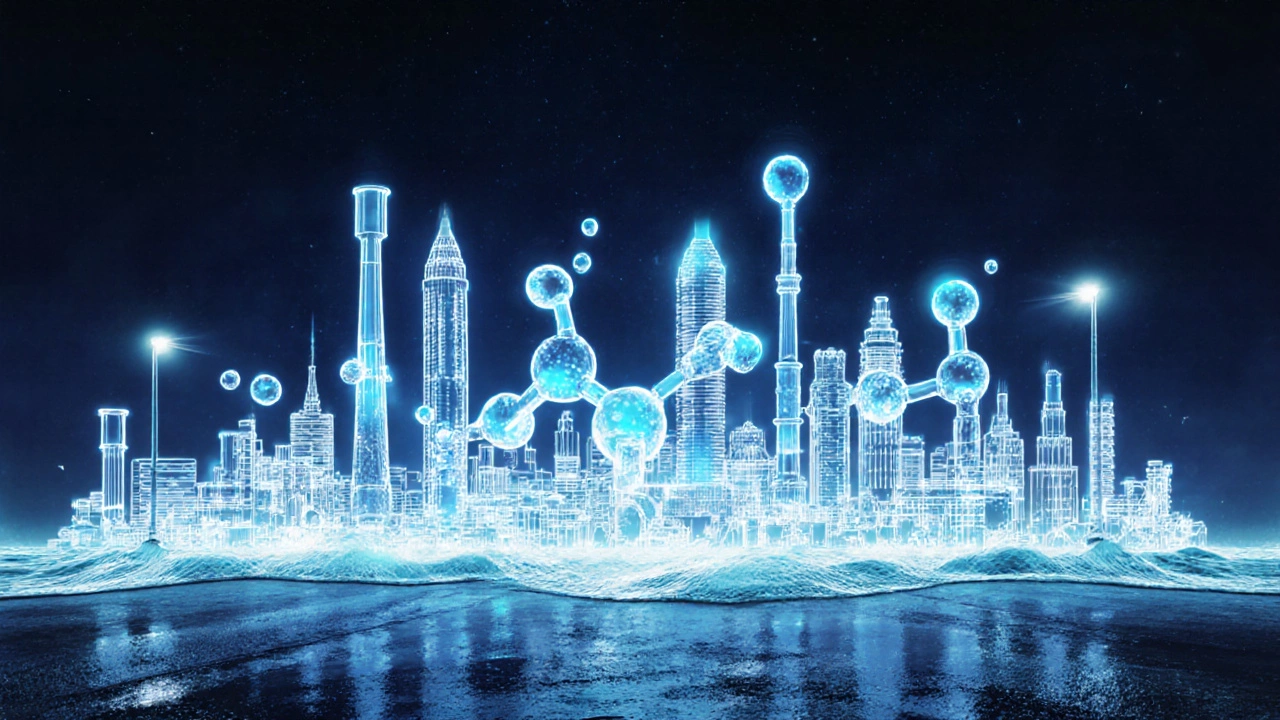
Challenges Facing the Industry
Despite growth, the sector faces real hurdles:- Energy costs - Natural gas and electricity prices are volatile. Ammonia plants, which use a lot of gas, are especially vulnerable.
- Environmental regulations - The Central Pollution Control Board (CPCB) has tightened limits on emissions and wastewater discharge. Older plants are struggling to upgrade.
- Raw material dependence - India imports most of its sulfur, phosphate rock, and potash. Global price swings hurt margins.
- Competition from China - Chinese chemical producers sell at lower prices due to state subsidies and scale.
What’s Next for India’s Chemical Industry
The future isn’t just about making more of the same. It’s about making better. Green ammonia is the next big frontier. Companies like Adani Green Energy and JSW Energy are partnering with global firms to pilot green ammonia projects. If successful, India could become a global exporter of clean fuel. Specialty chemicals - things like high-purity silicones, electronic chemicals, and biodegradable polymers - are another growth area. The PLI scheme is pushing companies to move up the value chain, away from bulk chemicals and into higher-margin products. The government is also pushing for chemical clusters - zones where multiple manufacturers share infrastructure like waste treatment, pipelines, and logistics. The first cluster, in Dahej, Gujarat, is already operational.Final Thoughts
The "king of chemicals" isn’t a title given by poets or politicians. It’s earned by volume, by necessity, by scale. In India, sulfuric acid, ammonia, and chlorine aren’t just chemicals - they’re lifelines. They feed millions, build homes, clean water, and make the clothes we wear. Understanding them isn’t about chemistry class. It’s about understanding how modern India works - from the farm to the factory to the faucet. These chemicals may not be glamorous. But without them, everything else falls apart.What are the top three chemicals known as the "king of chemicals" in India?
The top three chemicals known as the "king of chemicals" in India are sulfuric acid, ammonia, and chlorine. Sulfuric acid is used mainly in fertilizer production, ammonia is critical for nitrogen-based fertilizers and food security, and chlorine is essential for PVC, water treatment, and disinfectants. Together, they make up over 60% of India’s bulk chemical output.
Why is sulfuric acid called the king of chemicals?
Sulfuric acid is called the king because it’s the most produced industrial chemical in the world and the backbone of India’s fertilizer industry. Over 70% of it is used to make phosphoric acid, which becomes phosphate fertilizers. It’s also vital in metal processing, oil refining, and battery manufacturing. India produces over 32 million metric tons annually, making it the most critical chemical for both agriculture and industry.
How does ammonia production affect India’s food supply?
Ammonia is the main ingredient in urea, the most widely used nitrogen fertilizer in India. About 90% of ammonia production goes into making urea, which directly impacts crop yields. Since the government subsidizes urea to keep food affordable, ammonia production is tied to national food security. Any disruption in ammonia supply can lead to higher food prices and lower harvests.
Is India a major global producer of these chemicals?
India is not the largest producer - China and the U.S. are - but it’s among the top five globally for sulfuric acid and ammonia. India ranks fifth in sulfuric acid production and third in ammonia consumption. Its strength lies in integration and cost efficiency, not just volume. The country is also rapidly expanding its specialty chemical production under government incentives.
What challenges do Indian chemical manufacturers face today?
Indian chemical manufacturers face high energy costs, especially for ammonia plants that rely on natural gas. They also struggle with dependence on imported raw materials like sulfur and phosphate rock. Environmental regulations are tightening, forcing older plants to upgrade. Plus, Chinese producers sell at lower prices due to subsidies, making it hard for Indian firms to compete on bulk chemicals.
What is green ammonia, and why is it important for India?
Green ammonia is made using renewable energy instead of fossil fuels. It’s important because India’s current ammonia production emits large amounts of CO₂. Green ammonia could reduce emissions, help meet climate goals, and position India as a future exporter of clean fuel. Companies like Adani Green and JSW Energy are already testing pilot projects in Gujarat and Rajasthan.
For manufacturers looking to enter or expand in India’s chemical space, the focus should shift from volume to value. The future belongs to those who can make cleaner, smarter, and more integrated chemical products - not just more of the same.


